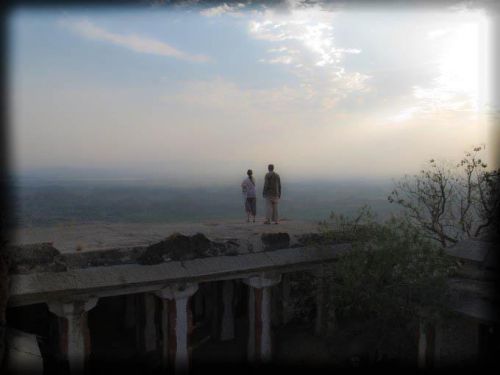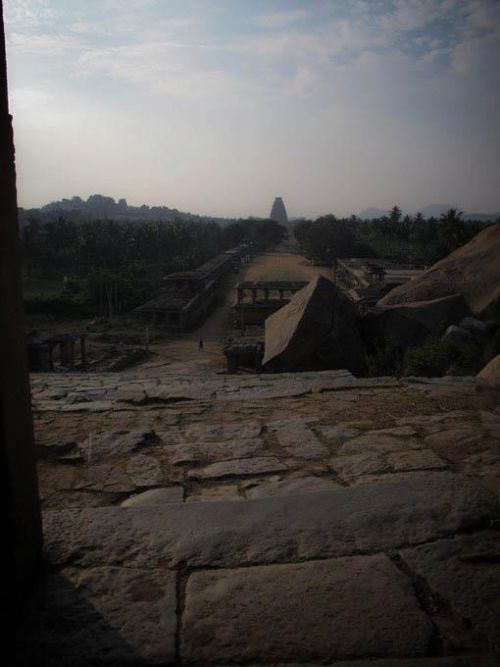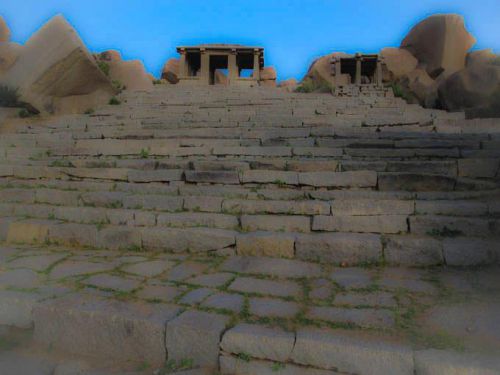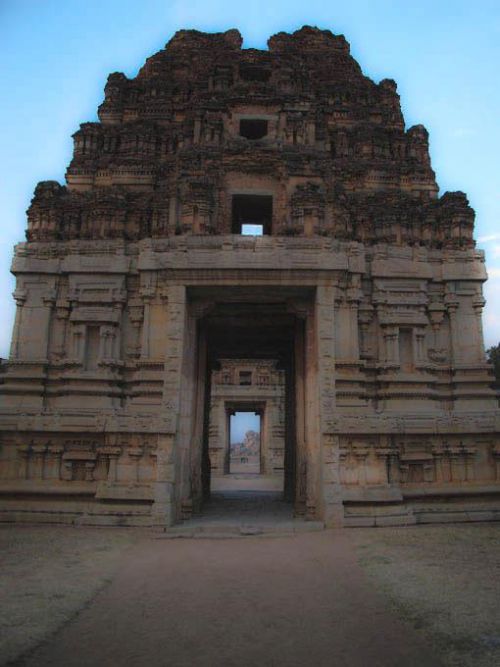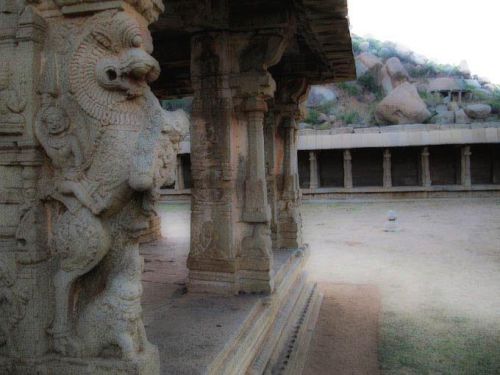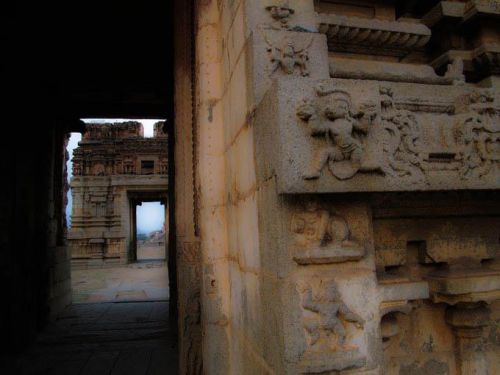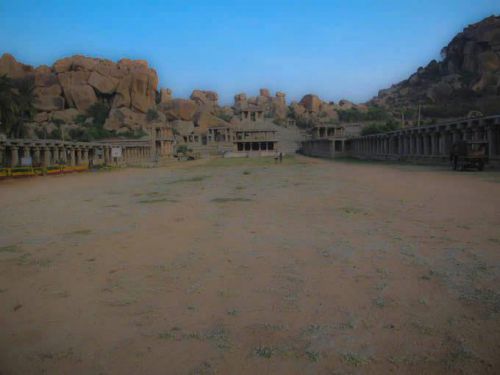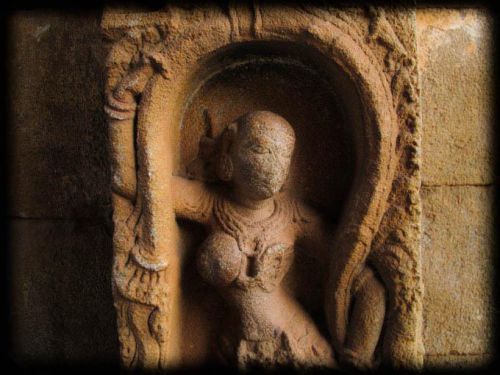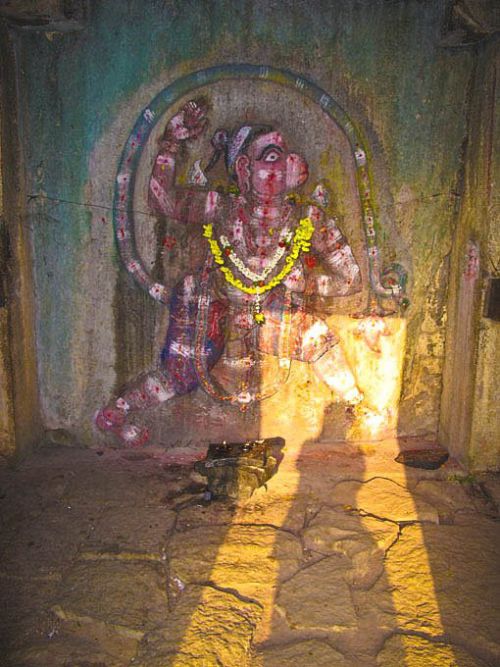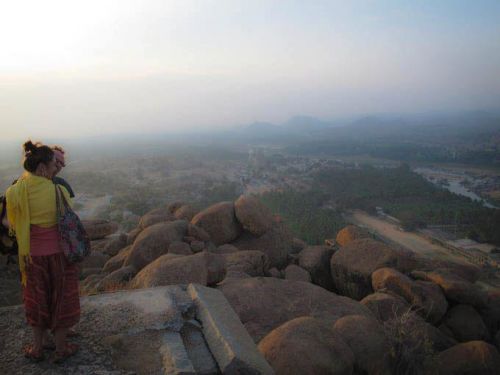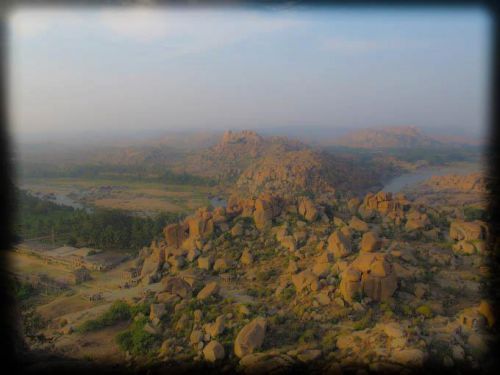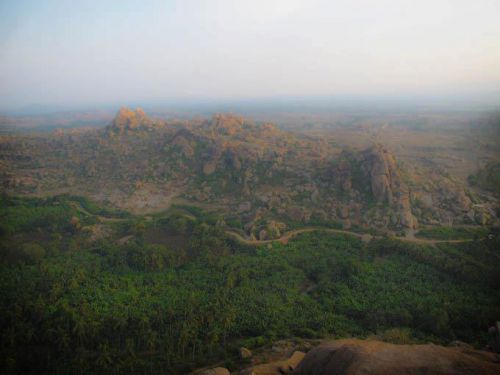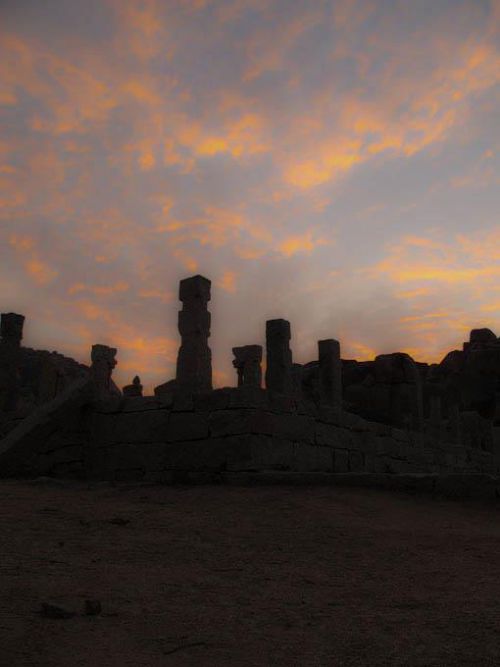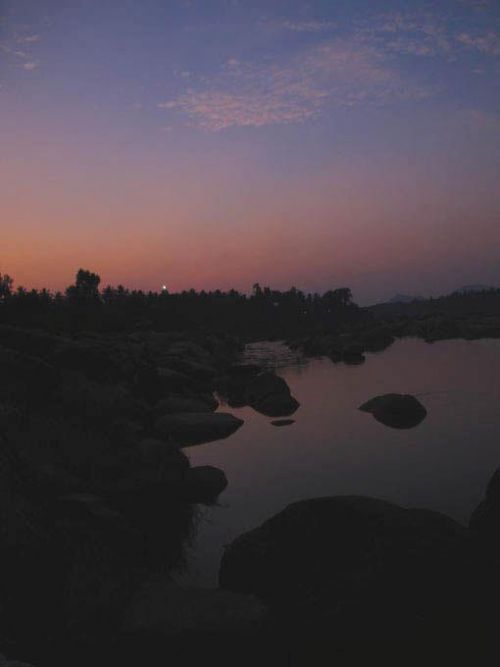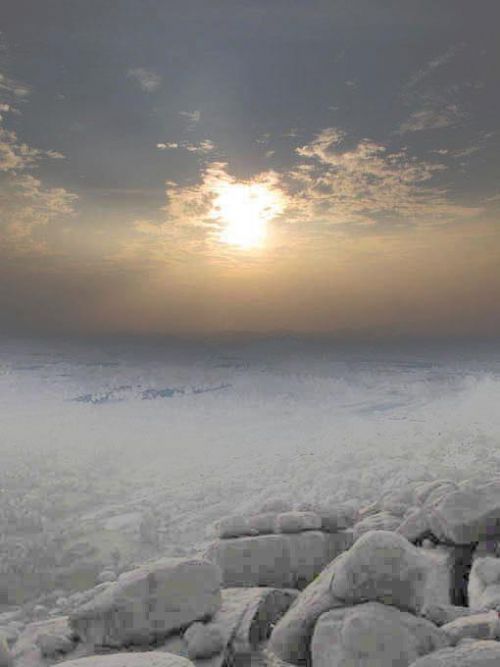12 Hampi Youpie 25/12/2011
Hampi : l’empire de pierre
Hampi : the stone empire
Touristes russes admirant la plaine en contrebas d`un mont surplombant Hampi et ses environs.
Russian tourists enjoying the view from a hill overhanging Hampi and its surroundings.
Début quatorzième siècle (1336) vit la naissance d’une ville qui allait devenir une des plus grande (jusqu’à 500.000 personnes) de son temps, d’une richesse insolante et d’une grande beauté minérale. En 1565 le crépuscule de l’empire Vijayanagar fut soudain, une confédération de sultanats du Deccan pillèrent et dévastèrent la ville, initiant son declin jusque mort s’ensuive.
Ici les paysages sont d’une minéralité prononcée, d’un enchevêtrement de pierres défiant parfois les lois de l’équilibre, d’un vert bananier, et d’un bleu O2 et H2O.
Le temple Virupaksha construit en partie en 1442, en partie vers 1510 siège au centre d’Hampi et en bout de l’artère majeure menant le pèlerin et le visiteur au temple dans un premier temps puis au bord de la rivière. Après les combats dévastateurs du passé, de nouveaux combats s’engagent ici entre l’état du Karnataka qui veut faire place net dans le village et y interdire tout commerce, mais aussi excaver certains bâtiments ancestraux et détruire certains bâtiments récents. Intérêts divergents et combat du pot de terre contre le pot de fer.
Anegundi, village voisin opposé, sur l’autre côté de la rivière Tungabhadra, est aussi un lieu superbe : roches vertigineuses, champs d’un vert électrique, ou d’un noir carbone et d’un gris de cendre, bananiers et canne à sucre, temples de pierre et village blanc. Ces deux endroits frappés de beauté font parti du royaume appelé Kishkinda dans le Ramayana, terre de Sugriva, d’Hanuman et de son armée de singes, et il en reste quelques-uns, ainsi qu’une multitude de sculptures et de temples dédié au dieu Hanuman.
Petite sélection d'images.
At the start of the 14th century (1336) witness the birth of a city that would become of of the biggest of its time (up to 500.000 inhabitants), of such an arrogant wealth and of a great mineral beauty. In 1565 the dawn of theVijayanagar empire came suddenly, a confederacy of Deccan sultanates came and ransacked the city, leaving it to a slow death.
Here the landscapes are strickingly mineral, a gathering of stones playing with the laws of gravity, ponctuated with a banana tree greenish, and of a O2 and H2O blues.
The Virupaksha temple built partly in 1442, and partly around 1510 stands in the center of Hampi and ends the main artera of the city leading the pilgrim and the visitor firstly to the temple and then to the river.
After some terrible battles that put the city down, another fight started, the one between the Karnataka authority and the inhabitants of Hampi as the first one want to forbide any commercial activity to the seconds. The state wants to clear up the village and bring it to something like Angkor Vat, closed on a large scale with a high fee entrance. The state also wants to excave some old buildings in the center and bring back the original ground level of the village (actually the main temple shows 3 steps, and 9 more are supposed to remain from the origins. It shows the depth to dig.
Anegundi, neighbouring village on the opposite bank of the river Tungabhadra, is also a superbe place : amazing rocs, field of an electric green, or of a carbon black colour or of an ash grey, banana trees and sugarcaneroches vertigineuses, stone temples and white village.
These two places strunk by beauty are part of the Kishkinda empire mentioned in the holy text Ramayana, land of Sugriva, of Hanuman and his army of monkeys, and some still remains, as well as many sculptures and temples dedicated to the monkey god Hanuman.
Small selection of pictures.
Vue de l'ancien forum d'Hampi au premier plan, puis du centre du village et de son temple Virupaksha au loin.
View of the old forum first, then at far the city center and its beautiful Virupaksha temple.
Belles ruines de l`empire Vijayanagar.
Beautiful ruins of the Vijayanagar empire.
Belles ruines de l`empire Vijayanagar.
Beautiful ruins of the Vijayanagar empire.
Belles ruines de l`empire Vijayanagar.
Beautiful ruins of the Vijayanagar empire.
Belles ruines de l`empire Vijayanagar.
Beautiful ruins of the Vijayanagar empire.
Ancien forum d`Hampi, fin du droit chemin qui mene au temple Virupaksha.
Old forum in Hampi, that leads to the other side to the old Virupaksha temple.
Statue de femmes dont les seins ont ete detruit lors des invasions musulmanes.
Woman statue that got her breast slaughtered during the moslem racksack.
Petit temple d`Hanuman au milieu des rochers.
Small Hanuman temple in the middle of the rocks.
Hampi bazaar et le temple Virupaksha en contrebas.
Hampi bazaar and the Virupaksha temple down the hill.
Hampi et sa beauté minérale.
Hampi and its mineral beauty.
Minéral .... et végétal.
Mineral ... and vegetal.
Belles ruines dans le crepuscule de l`empire Vijayanagar.
Beautiful ruins in the dawn of the Vijayanagar empire.
La riviere, Hampi au loin et la lumiere du temple Virupaksha.
The river, Hampi and the light of the Virupaksha temple.
Walking on the moon.
Depuis ma hutte.
From my hut.
PREVIOUS : 11 Trip to Devadurga
A découvrir aussi
- 14 Train Train 01/01/2012
- 21 Burshlli in Delhi !!!!! 02/02/2012
- 24 This is the end my friends 10/02/2012
Inscrivez-vous au blog
Soyez prévenu par email des prochaines mises à jour
Rejoignez les 89 autres membres

